
April 22, 2016, by Lindsay Brooke
Chernobyl 30 years on – the long term behaviour of radioactive isotopes in soils
As we mark the 30th anniversary of the Chernobyl disaster George Shaw, Professor of Environmental Science in the School of Biosciences at The University of Nottingham, talks about the work his team are doing to investigate the long term behaviour of radioactive isotopes in soils.
Experts from The University of Nottingham have been collecting samples from the Chernobyl Exclusion Zone for their research into the ‘Biogeochemical processes and radionuclide behaviour in soil-plant systems‘. The project is part of a broader study being conducted into the long-term environmental impacts of the Chernobyl accident.
The Nottingham team involves:
Dr Maria Izquierdo – Research Fellow
Professor Neil Crout – Professor of Environmental Modelling
Dr Liz Bailey – Lecturer in Environmental Science
Dr Scott Young – Associate Professor and Reader in Environmental Science
Heather Sanders – PhD Student
Sampling in exclusion zone
We have made one visit to the site in August and September 2015. I went with Maria Izquierdo and another of my PhD students, Thawatchai Ithipoonthanakorn from the Thai Office for Atoms for Peace.
We used this visit to collect samples and also to participate in the TREE Summer School, which Heather Sanders also attended.
Full risk assessments were carried out in consultation with the University’s Safety Office before we made the visit. The main precautions are to avoid contamination of skin and clothes while working in the field (hence the wellies, boiler suits and gloves) and to minimise any inhalation of dust by wearing face masks during sampling. External exposures are monitored by personal dosimeters worn at all times in the field; these doses are minimised by continuously monitoring the ambient radiation dose at each field site and spending as little time as possible in sites with higher dose rates. We had expert local guidance from Dr Sergey Gaschak of the Chernobyl Centre for Nuclear Safety, Radioactive Waste and Radioecology.
The landscape in the Chernobyl Exclusion Zone is, as far one can see, absolutely normal with no obvious detrimental effects from the accident.
We visited the two most highly contaminated areas, the Red Forest and the North Trace, which received such high radiation doses in the first few days following the accident that large numbers of pine trees died. The needles on these trees turned red over the following weeks and the area to the immediate west of the reactor was dubbed the ‘Red Forest’ by the Soviet public. The dead trees in this area were bulldozed and buried leaving an open swathe of land. Today, the radiation doses here are still high but have fallen well below the lethal levels of 1986. Birch trees and other vegetation have colonised the area and appear to be perfectly healthy, despite the continuing high radiation doses. We looked at tree growth on the edge of the Red Forest and on the North Trace by taking intact cores of wood in which the growth rings can be measured from the present day back to the 1960s and 70s. These show that there was a slowing down of tree growth from about 1988 to 1994, in response to the intense but short-lived radiation dose they received, but then growth returned to normal and even exceeded growth rates before the accident.
The contamination in the Exclusion Zone is very patchy, with some areas having close to normal radiation levels. The contamination across these areas is well mapped and it is possible to plan field work so that high dose areas are completely avoided, unless it is necessary to visit them. A very obvious feature of the Exclusion Zone is the abundant wildlife that has moved in since humans abandoned farms and villages in 1986. This includes wild boar, deer, elk (moose), wolves and, recently, European bison which have migrated from Belarus to the north. Our TREE colleagues Professor Nick Beresford from the Centre for Ecology and Hydrology and Dr Mike Wood of Salford University have placed numerous camera traps around the area and have the first photographic evidence of the presence of European brown bear in the area. Unlike us, these animals have no way of telling which areas are highly contaminated and numerous studies are being conducted by our colleagues to measure how much radiation dose they receive and whether or not they are as healthy as they appear.
Prior to 2015, my last visit to the exclusion zone was in 1995. With the passage of 20 years the change in the area is striking. The presence of the New Safe Confinement building looms large as an indication of the technical advances being made to safeguard the damaged reactor in the long-term. On the other hand, the return of the majority of the exclusion zone to a wild state is equally obvious.
Our major experimental contribution to the TREE project is due to end in 2017, at which time we will be publishing our results. The TREE project itself is due to run until 2018, when the full results from the consortium will be reported.
No comments yet, fill out a comment to be the first

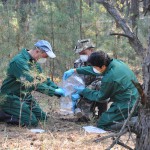
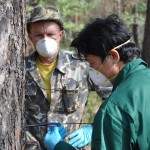
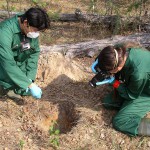
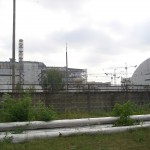

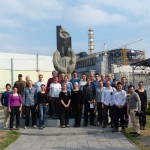
Leave a Reply